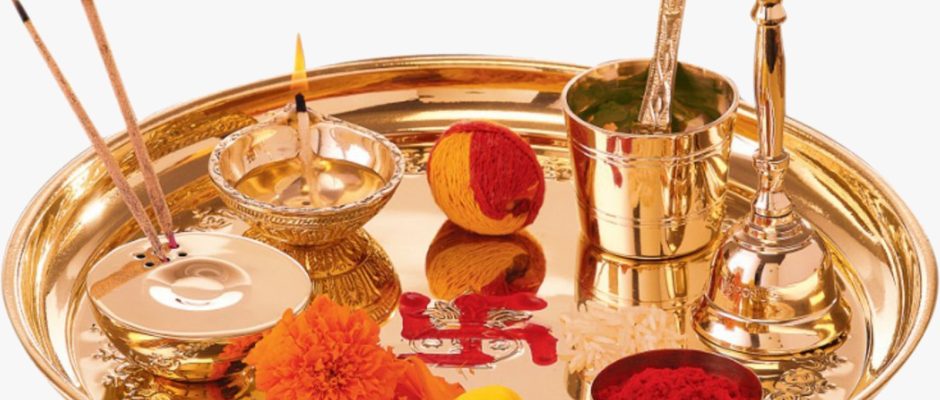Giri Trading Agency, a name synonymous with Hindu spiritual offerings, has a rich history rooted in humble beginnings. Founded in 1951 by Mr. Tirupunithra Swarnagiri as a modest street-side shop specializing in Pooja Products and Pooja Books, the company’s growth and evolution have been nothing short of remarkable. In this interview with Mr. Abhishek Prakash, the Director of Content and New Media, we explore the brand’s philosophy, the significance of the auspicious month of Aadi, and the essential items used in Hindu rituals. Mr. Abhishek Prakash, the Director of Content and New Media What makes the month of Aadi particularly special in the Hindu tradition? Why is it considered an auspicious time? The month of Aadi, typically falling between mid-July and mid-August, holds significant importance in the Hindu tradition as it heralds the onset of the Dakshinayana phase when the Sun begins its southward journey. Aadi is dedicated to honoring the divine feminine energy, particularly Goddess Shakti or Parvati. It is believed that during this month, the cosmic energies are heightened, making it an auspicious time for spiritual practices, rituals, and ceremonies. Devotees observe fasting, visit temples, and participate in community celebrations to invoke the blessings of Goddess Shakti. Aadi also marks the beginning of the monsoon season, crucial for agricultural activities, further adding to its cultural and societal significance. Overall, Aadi is cherished for its cultural, spiritual, and agricultural significance, emphasizing reverence for the divine feminine and the renewal of cosmic energies. What are some of the specific poojas or rituals commonly performed during the month of Aadi? The month of Aadi holds profound spiritual significance in Hindu tradition, marked by numerous poojas and rituals that devotees observe with deep devotion and reverence. Some of the most commonly performed poojas and rituals during this auspicious month include Aadi Perukku, Aadi Amavasai, Aadi Pooram, Varalakshmi Vratham, Aadi Krithigai and Aadi Chevvai. Aadi Perukku: This ritual involves offering prayers to rivers and water bodies on the 18th day of Aadi, expressing gratitude for the monsoon, and praying for a bountiful harvest. Aadi Amavasai: On the new moon day of Aadi, families perform rituals to honor their ancestors. Special prayers, tarpanam (water oblations), and offerings of food are made to seek the blessings and peace of departed souls. Aadi Pooram: Celebrated during the star Pooram, this day commemorates the birth of Goddess Andal. Special poojas are conducted in temples dedicated to her, and processions with her idol are organized. Varalakshmi Vratham: Observed on the Friday before the full moon in Aadi, this ritual is dedicated to Goddess Lakshmi. Women perform elaborate poojas at home, invoking the goddess of wealth and prosperity. They prepare a special kalasha (pot) decorated with flowers and turmeric, symbolizing the goddess. Aadi Krithigai: This day is dedicated to Lord Murugan. Aadi Chevvai: Special prayers are conducted on Tuesdays in Aadi to honor the fierce aspect of Goddess Parvati. These rituals are believed to ward off evil and protect against negative influences. Could you list a few items that are considered essential in a Hindu household? In a Hindu household, several items are considered essential for daily rituals and poojas. These items help create a sacred atmosphere and facilitate worship practices, fostering a sense of devotion and spiritual connection. They are integral to maintaining the sanctity of the home and ensuring that religious observances are conducted with reverence and precision. The items include Deepams (Oil Lamps), Agarbattis (Incense Sticks), Kumkum and Turmeric, Holy Water (Ganga Jal), Pooja Bell, Flowers and Garlands, and Camphor. What is the guiding philosophy behind Giri Trading Agency? What are the core values that drive the organization? At Giri Trading Agency, our guiding philosophy is rooted in the mission to spread the rich Hindu culture and traditions while promoting value-based living globally. We are dedicated to enhancing spiritual experiences and promoting holistic growth among our patrons worldwide. Operating with transparency and honesty, we build trust with stakeholders through ethical practices. Which products are consistently popular among Giri’s customers? What categories see the highest sales? Giri Trading Agency is renowned for its extensive range of spiritual and religious products, with several items consistently popular among customers. Giri Pooja Products, including items like deepams, agarbattis, and puja thalis, are indispensable for daily rituals and ceremonies, appealing to a broad spectrum of devotees. Giri Books, offering a rich assortment of spiritual texts, scriptures, and educational literature on Hindu philosophy and culture, cater to those seeking knowledge and spiritual growth. During festive seasons like Navaratri, Golu Padi, traditional steps used for displaying dolls and idols, become particularly popular for their craftsmanship and cultural significance. & the Eco-Friendly Ganesha is also one of the top-selling products during Ganesha Chaturthi. The intricately designed Deity Jewellery for adorning idols further enhances the spiritual offerings that drive high sales at Giri. Does Giri Trading Agency operate solely with physical stores, or are their products also available online? Giri Trading Agency operates both online and through physical stores, embodying an omnichannel retailing approach. With 35 showrooms across Indian states like Tamil Nadu, Karnataka, Telangana, Puducherry, Maharashtra, and New Delhi, Giri also maintains a global presence in the United States, United Kingdom, Australia, and the United Arab Emirates. A Promising Future Rooted in Tradition Giri Trading Agency’s enduring success is a testament to its unwavering commitment to preserving, and showcasing Hindu traditions and spirituality, as emphasized by Mr. Abhishek Prakash. The company’s core values of cultural preservation, holistic growth, and ethical practices continue to guide its mission, establishing it as a trusted source of spiritual and cultural products.









